Matador Network's Blog, page 1054
July 17, 2019
Stay in Oscar Mayer Wienermobile

Any wishes of becoming an Oscar Mayer wiener will come true in August.
Well, almost. You won’t literally be able to turn yourself into a tube of processed beef and sodium lactate, but for one night in August, you can live inside of one. That’s because, in honor of National Hot Dog Day, Oscar Mayer is offering overnight stays in the iconic Wienermobile on Airbnb, parked somewhere in the city of Chicago.
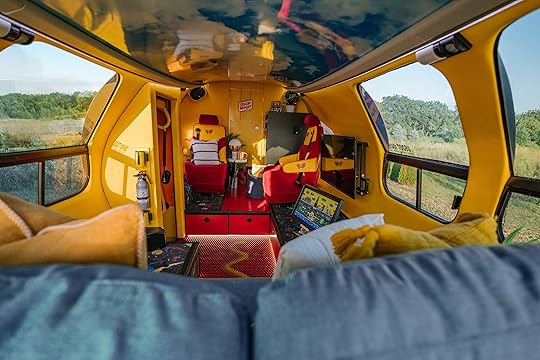
Photo: Airbnb
Eat your heart out, Abe Froman.
The one-night-only stays will run from August 1-3, conveniently coinciding with the Lollapalooza festival happening in Grant Park. So if you find yourself on the inside of a hot dog at the end of the night, don’t blame your mushrooms.

Photo: Airbnb

Oscar Meyer Weinermobile on Airbnb
The 27-foot tubesteak on wheels will be open to the public for overnights for the first time since its creation in 1936. It’ll have a mini-fridge stocked with everything you need to make your own Chicago-style dogs, plus a hot dog roller you can take home with you — in case you want to turn your kitchen into a regional airport snack bar.
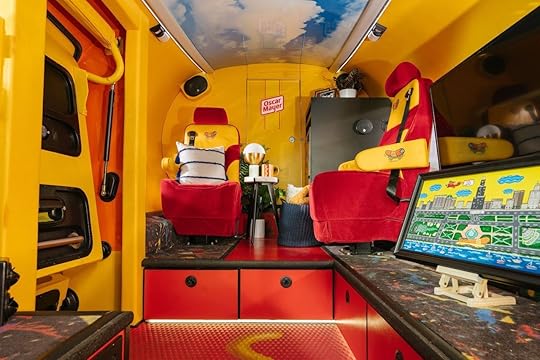
Photo: Airbnb
Out front, you’ll get a full-on trailer park patio setup, complete with spacious wooden chairs, potted plants, and astroturf. It’s a Florida dream right in the middle of Chicago, where you can invite passersby over for a hot dog, ensuring everyone will fall in love with you.
You’ll also get a swag bag full of “Sun’s out, buns out” apparel, if you feel like being a walking Oscar Mayer billboard at the festival. All of this will run you $136, or about 38 packs of hot dogs.
Since sleeping in a motorized hot dog may well be the hotel highlight of 2019, Oscar Mayer will be announcing more stay dates on July 24, so stay tuned. Even if you’re not planning a trip to Chicago, the chance to sleep in the Wienermobile doesn’t come along every day. So send this out to your friends and see who else wants to be an Oscar Mayer wiener for a night. 

More like this: You can now rent Tony Stark’s cabin from ‘Endgame’ on Airbnb
The post You can spend the night in the Wienermobile. Seriously. appeared first on Matador Network.

Hidden Busch pop-up bar in forest

Imagine happening upon a secret bar hidden amongst the trees with a stock of cold beer just for you after a long day of hiking. It may sound like a dream, but if you’re lucky enough, it might just come true.
Busch Beer, an American brand of lager, is hiding a bar somewhere in a US national forest. The specific park is being kept under wraps; it’s your job to find it and they’re not making it easy.
The secret pop-up bar will open on July 20, from 10:00 AM to 5:00 PM, and if you do manage to find it, you will be given free beer, some swag, and entered into a raffle to win free beer for life, national park passes, and a cabin getaway, among other prizes.
The pop-up event was organized in partnership with the National Forest Foundation. Busch has promised to plant 100 trees in a national forest for every visitor who makes it to the shop, so if you’re passionate about beer and the environment, put on your hiking boots and get going.
The bar’s location is still a secret, but Busch has started dropping hints about the bar’s location on its Twitter account, so you should keep an eye on it. The first hint below will narrow down your search a little bit. 
Clue #1: Put on your drinking — err, thinking — cap and fill in the blank…#BuschPopUp is located in the U__A. pic.twitter.com/gF312s2a7y
— Busch Beer (@BuschBeer) July 16, 2019

More like this: Beer hiking is a thing, and it’s awesome. Here’s where to do it.
The post Find this hidden pop-up bar in a national forest and win free beer for life appeared first on Matador Network.

Finland Heavy Metal Knitting contest

Heavy metal and knitting have always been natural companions — it’s just that no one has ever thought to combine them. Not until now, that is. On July 11, Joensuu, Finland, hosted the first-ever Heavy Metal Knitting World Championship, and if you’re new to the competition, the rules are pretty simple: Knit while listening to heavy metal. The competition attracted around 200 people from around the world, primarily fans of heavy metal and knitting.
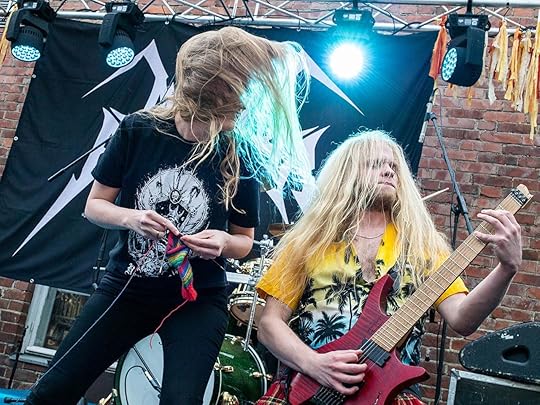
Photo: Heavy Metal Knitting
Heather McLaeren (knitter in the photo above) traveled to Finland from Scotland for the competition, and told Fox News, “It’s ridiculous but it’s so much fun. When I saw there was a combination of heavy metal and knitting, I thought ‘that’s my niche.’”
Photos of the event show headbanging knitters doing their best at purling stitches while showing their dancing moves.

Photo: Heavy Metal Knitting
To win the highly coveted title, however, you have to get creative. This year’s winners were a five-person group from Japan called Giga Body Metal, who put on a sumo wrestler show as part of their knitting performance.
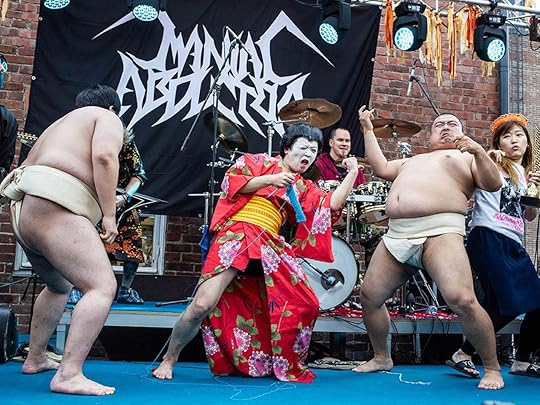
Photo: Heavy Metal Knitting
Thankfully, this competition isn’t the last. Organizers have already started planning for next year, so you’d better start sharpening your needles — and your spiky outfits. 

More like this: The 5 most beautiful towns in Finland tourists miss
The post Finland hosted the world’s first Heavy Metal Knitting World Championship and it was as weird as it sounds appeared first on Matador Network.

7 cultured experiences in Las Vegas

The typical “Vegas first-timer bucket list” is one we all know: selfies in front of the Bellagio, gorging on the country’s best buffets, letting loose on the dance floor. But for second-timers (and the selfie-opposed), the entire city is on the table.
Take a deep dive into neon, mobsters, and cowboy culture; a journey through world-renowned art, music, and architecture. Nowhere else but Las Vegas can you find such a fantastic, eclectic combination of cultural attractions, and nowhere else but Las Vegas should you expect experiences like these.
1. The Mob Museum
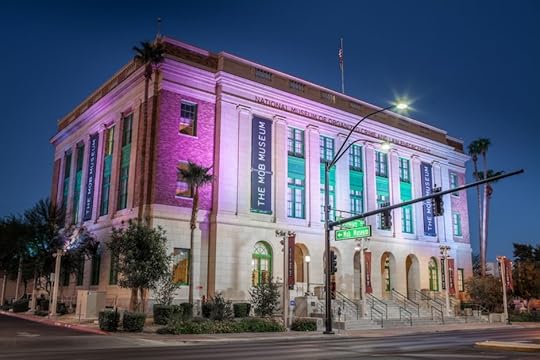
Photo: The Mob Museum
Before you (literally) zipline over Fremont Street, check out the nearby Mob Museum — it’s housed in the fully restored 1930s-era courthouse building where 3rd St runs into Stewart Ave. The museum provides a crazy-intense overview of local and national mob history, spanning from the early 1900s through today. It’s official name is the National Museum of Organized Crime & Law Enforcement, so expect something bold and honest, not dramatized and glorified.
You’ll explore artifacts from Al Capone’s enterprise, try out your detective skills in interactive crime lab exhibits, and get a look at how some of the most horrifying events have influenced modern criminal investigation techniques the world over. Save time for the onsite gift shop — where you’ll find actually one-of-a-kind souvenirs to take home.
2. The Neon Museum

Photo: Las Vegas Convention and Visitors Authority
The “boneyard” at the Neon Museum, just north of Downtown, is an absolute must for vintage lovers, history buffs, Vegas aficionados, and fans of all things weird. Here, you’re basically strolling through an illuminated history of the city and its treasure trove of iconic businesses.
On the one-hour tour, your guide will lead you between larger-than-life neon signs and architectural features, detailing the stories and intricate restoration efforts most have gone through. You’ll see old-school signage from notable motels, resorts, and gambling halls of the Vegas of yore, and you’ll definitely have time to pose for some only-in-Vegas photos (note that cameras aren’t allowed, but phones are). If you can, visit during the evening to see the restored signs lit up.
3. Area 15

Photo: Area 15
Area 15 is a space the likes of which you’ve never seen before — in Las Vegas, or anywhere. This multipurpose creative complex just west of The Strip (with tons of free parking) promises a whole new level of retail, art, and entertainment options — we’re talking interactive art installations, music festivals, and immersive food and drink experiences. After all, why shouldn’t you be able to shop next to a forest?
The opening is slated for later in 2019. Once the doors start swinging, dress up, grab a cocktail, and get ready to — among other things — enter a world created by legendary multimedia artists Meow Wolf. They’ve chosen Las Vegas as the home of their second surreal and utterly unique universe.
4. The Smith Center
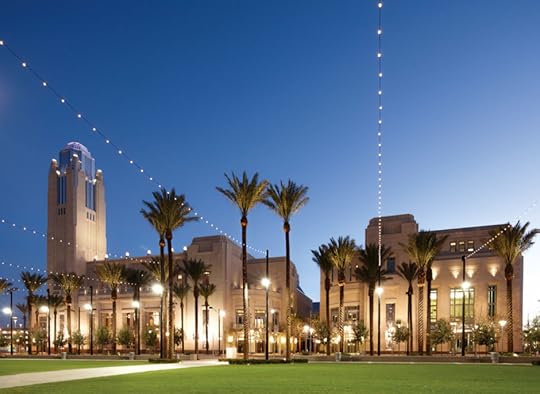
Photo: The Smith Center for the Performing Arts
Names come so big in Vegas, they need two syllables max — Cher, Celine, Britney. But away from the hu-u-u-ge auditoriums and glitter, there’s likely a different kind of live performance happening at The Smith Center for the Performing Arts. Resident companies include the Nevada Ballet and the Las Vegas Philharmonic, and award-winning artists and Broadway productions routinely grace the stage.
And we mean routinely. The 2019-2020 Broadway list reads like the first row at the Tonys: Sing along to Fiddler on the Roof. Snag tickets for Wicked or Mean Girls. Go to the show that everyone says is ridiculously, ridiculously amazing: The Spongebob Musical. (Seriously, have you read the reviews?) And if spectacle isn’t your bag, spend a cool night out by grabbing a few cocktails and a classy bite at Myron’s Cabaret Jazz, a 240-seat cabaret-style venue located inside The Smith Center.
5. LOVE (art installation at The Venetian)

Photo: The Venetian Resort Las Vegas
Here’s a hot tip: Plan to check out the LOVE installation during off-hours to avoid waiting in line to snap your selfie. Laura Kimpton’s work of art is hugely popular, and no wonder. It’s absolutely gorgeous, with its sparkly ruby red presence and oversized sense of joy — and it’s totally free to visit at the Waterfall Atrium in The Venetian Resort Las Vegas.
These four magical letters are a monumental 12 feet tall and spread out to 36 feet in width. Go in the wee hours, cross your heart, and make a wish that all your romantic dreams come true.
6. 18b, the Las Vegas Arts District

Photo: Ryan Reason
Let yourself be drawn in by the neon lights of 18b (aka the Las Vegas Arts District, just south of Downtown), and you’ll enter an imaginative neighborhood full of galleries, boutiques, and ultra-local eateries. Grab a drink and watch area artists do their thing during an Art Battle, wander resale shops to score fabulous vintage fashion finds, follow the sounds of live music, pop by for a First Friday block party, and tour the Burlesque Hall of Fame. All kinds of artists flock to Vegas for its uniquely weird personality, and nowhere is it more evident than right here.
Oh, and if you’re wondering, “Why the the heck is it called 18b?” The Las Vegas Arts District was originally 18 blocks — nowadays it’s bigger, but it remains an easy stroll over from Fremont Street.
7. Smiling King Bear at Wynn

Photo: Barbara Kraft
On your way to see Le Rêve – The Dream at Wynn Las Vegas (a show that comes highly recommended), take some time to explore the resort’s art collection spread throughout its atriums and hallways. One of the newest and most impressive additions is Smiling King Bear by renowned artist Okuda San Miguel. This 16-foot-tall sculpture combines pop art and surrealism in a prismatic, colorful pattern. It’s hard not to grin back at the joyous work and the smiley-faced ball held in the bear’s lap. It’s child-like glee captured in an abstract, rainbow statue — a fun kind of metaphor for Las Vegas itself. 
The post 7 cultured experiences to have in Las Vegas appeared first on Matador Network.

July 16, 2019
Best scuba diving in Cozumel, Mexico

Get off a bus in Playa del Carmen, Mexico, and most people will think you’re there to party like it’s rowdy Cancun or bougie, bohemian Tulum. But tell them you’re headed to Cozumel, and they’ll know you’re there for one thing: scuba diving. Nearly 50 years ago, Jacques Cousteau called Cozumel one of the finest dive spots in the world. With its Mesoamerican Barrier Reef teeming with wildlife, Cozumel still is. Here’s what you’ll experience.
A divers’ island free from the mainland crowds

Photo: Marge Sudol/Shutterstock
Mexico’s Caribbean Coast might be the country’s worst-kept secret, with all-inclusives carving up the beachfront outside Mayan ruins and hard-partying tourists driving up the average bedtime until well into the next morning. Under an hour on the Ultramar ferry from Playa del Carmen, which sits midway between Cancun and Tulum, Cozumel feels lightyears away from the mainland crowds.
It’s hardly undiscovered, with several all-inclusives of its own, waterfront condos where North American snowbirds migrate for balmier winters, and a steady stream of cruise ships that dock for the afternoon. But above all else, the island’s tourism is driven by one demographic: divers.
Where mainland visitors tend to find, or make, trouble, the divers that venture off the coast tend to be early-to-bed, early-to-rise types looking to maximize their time in the water. Resort guests swap drinking by the pool for drinking in the marine life, and even some cruisers, those that actually stray from downtown San Miguel, trade their cruise ships for dive boats while berthed.
In town, chain restaurants like Señor Frog’s are rarely at capacity, and it’s unusual to see many travelers outside the center, save, perhaps, at the island’s Mayan ruins.
Despite being as poorly kept a secret in the dive community as Playa del Carmen is to travelers at large, Cozumel feels remarkably unburdened by its tourism, offering a tamer, safer slice of Quintana Roo that lets the exquisite reef shoulder most of the marketing, just the way divers like it.
A coral reef that stopped Jacques Cousteau in his tracks

Photo: J.S. Lamy/Shutterstock
Cozumel sits on one end of the Mesoamerican Barrier Reef, a titanic reef system that spans the coasts of Mexico, Belize, Guatemala, and Honduras. Its Caribbean waters are impossibly blue, dark like denim where they plunge deep and a turquoise so vivid it almost looks artificial where they flow over fine white sandbars.
Below the surface, the water’s warm, requiring only a shorty if any wetsuit at all, and clear as gin, showcasing the reef system’s many-hued inhabitants with perfect visibility. Loggerhead, green, and hawksbill turtles mingle with eagle and manta rays on the ocean floor while nurse sharks and barracudas stalk the reef. Triggerfish the size of overfed house cats and jet black swimmers with electric-blue trim glide past large, crevice-dwelling lobsters, which bury themselves among roughly 20 different coral species and 30 types of sponge.
It’s no wonder Cousteau declared Cozumel a world-class diving destination upon visiting in 1961, high praise from the man who co-pioneered the first commercial scuba gear. In large part, the island owes its reputation to Cousteau, whose own legacy is kept alive by the myriad divers who visit each year, eager to follow in his proverbial footsteps.
Stunning dive sites for all certification levels

Photo: Susan Schmitz/Shutterstock
Cozumel seduces both resort-course divers and those with decades of experience. In a week of diving with ScubaTony, I set out with divers of all skill levels, among them a newly certified diver who’d never taken to the open ocean, an Austrian couple that had spent the year racking up dives around the world after getting certified in Thailand, a former police rescue diver, and newlyweds Frederick and Debra who had more than 20 years of experience apiece.
Some, like myself, were new to Cozumel. Others were island regulars. All were consistently impressed by the reef, which flaunts much of its most coveted marine life at depths accessible to beginners. A number of the most popular sites, including Colombia Shallows with its platform reef and Punta Dalila with its resident king crabs, linger between a mere 30 and 40 feet.
Intermediate divers can drop down to 60 feet at the Santa Rosa Wall, where they can peer out over an inky abyss that plummets 3,000 feet down before returning to the site’s coral formations, some of which create tunnels for divers to swim through. Even the more advanced C-53 wreck, a 184-foot Mexican Navy Minesweeper in the Chankanaab Reef with its doors removed for ease of access, caps at about 70 feet.
“There are deeper dives,” says Marc, one of ScubaTony’s expert guides, as we head back from the wreck. “But the best max out at 80 feet,” he explains, noting that there isn’t much worth doing that advanced open water divers can’t handle.
Drift diving that’s the envy of the world

Photo: tubuceo/Shutterstock
It’s less the depth that decides a site’s difficulty in Cozumel than the current. And for many of the island’s regular visitors, it’s precisely the formidable drift that draws them back year after year.
“I was in Roatan, Honduras, with my son recently,” Debra tells our boat of more experienced divers one afternoon as we swap stories en route to Punta Tunich, an advanced site in the Palancar Reef that Marc wagered has one of the fastest currents in the world. Like Cozumel, Roatan belongs to the Mesoamerican Barrier Reef, but according to Debra, the drift could hardly compete.
“I’d recommend it,” she says with authority, swishing de-fogging solution around bright pink goggles and checking her matching, pink-trimmed BCD, “but we wouldn’t have come anywhere but here for our honeymoon.”
Punta Tunich is the holy grail for drift divers in Cozumel, with an adrenaline-inducing current unlike any I’ve experienced. Unlike most drifts, which make divers feel more like astronauts floating weightlessly in space, when I found my perfect buoyancy at Punta Tunich, it almost felt as though I was still while the ocean spun around me, like a movie projected on an infinite screen.
Swimming against the current to take in wildlife like splendid toadfish, nurse sharks, or even seahorses is a workout, albeit a worthwhile one. But it’s best to just go with the flow, literally, as you hurdle past the steep wall, reef top, and neighboring Yucab reef as you slowly begin your ascent.
It’s not all fast and furious here, though. Cozumel’s gentler currents make diving easier and, for some, more enjoyable, almost completely eliminating the need for flippers. Novice divers will find mild to moderate drift at sites like the Santa Rosa and Colombia Walls, as well as Casa Blanca, an unofficial site neighboring La Francesca, a dive site worth seeing in its own right that’s rumored to be named for a French woman Cousteau took as a lover.
A scuba team that feels like family

Photo: ScubaTony
In one diver’s case, it wasn’t just the drift diving that kept annual visitor Dudley coming back for more but the ScubaTony team itself. “Dive with them once,” he assured me on my first morning out, patting our captain, Papo, on the back like a brother, “and you’re family.”
It was easy to believe. A few hours prior, I had arrived at Marina Fonatur early, eager for my first dive after a few years’ hiatus. There, a guide named Pedro greeted me with a warm, welcoming smile, quickly outfitting me with gear and briefing me on the sites we might visit that morning.
Next I met Papo, who was holding a plate of stewed pork and beans that his wife had made, sharing breakfast with the marina crew as they often did before early-morning departures. Within minutes, I had a tortilla in one hand and my other arm around the captain, who kept inching the plate my way, encouraging, “Don’t be shy.”
It’s hard to be shy on most dive boats, but ScubaTony’s intimate, six-person-max setups ensured all divers were looked after as if they were, as Dudley said, family.
Only, in a way, even better.
Resort guests get shuttled to and from their hotel docks, their rental gear already assembled and awaiting. Sites are decided democratically, based on each diver’s experience, the day’s conditions, and any requests divers may have. Then, in the water, beginners are paid special attention without feeling nannied while advanced divers are given more free reign, promising everyone the dive of their dreams.
Night dives you don’t want to miss

Photo: Ovidiu Curic/Shutterstock
A full day of diving might use four tanks, split between morning and afternoon excursions. Each outing visits two sites, roughly one tank and one hour each, with an hour-long surface interval in between where divers can refuel and rehydrate with the snacks and water bottles provided.
More than once after a four-tank day, I wound down in the hot tub at my accommodation, Casa Phoenix, staring out at the sea as the sun sank below the horizon. Each time, I imagined there was little better than letting your muscles soak under pastel skies after a long day in the water. I was wrong.
Between late March and the end of September, ScubaTony also hosts combination twilight and night dives that allow divers to take in the sunset from the very water the sun seems to disappear beneath before heading back underwater after dark, when the seascape takes on new characteristics illuminated only by flashlight.
At night, new marine life like octopuses and moray eels also come out to play, painting a fuller picture of the reef system’s many wonders.
If possible, request a twilight or night dive at La Francesca to experience all the romance and exhilaration of a foreign affair, whether or not Cousteau’s French beauty was anything more than legend.
A protected reef means thriving marine life
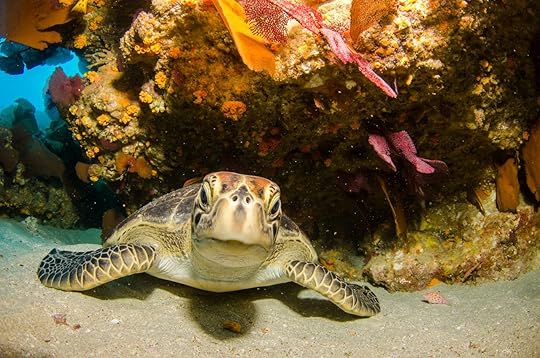
Photo: Leonardo Gonzalez/Shutterstock
The majority of Cozumel’s most frequented sites belong to Arrecifes de Cozumel National Park, a protected area spanning the island’s south side. It’s here that vulnerable species like splendid toadfish, queen conch, and black coral are most present or, in the case of the island’s turtle species, thriving.
Though specific wildlife is never guaranteed on underwater safaris, Cozumel consistently lived up to its reputation as a sea turtle haven while I was there. I saw two almost immediately on my first dive at Colombia Pinnacles and at least one on nearly every subsequent dive. Perhaps it helped that I came in June, which coincides with the rainy season but also hatching season, a phenomenon visitors can observe up close on the island’s eastern beaches.
Still, like most of the world’s reefs, Cozumel’s are under threat of bleaching, human impact, and, at times, invasive algae. Divers should always do their part to protect the environment by keeping their hands to themselves, wearing reef-safe sunscreen or none at all when the coral is agitated, and donating to projects like the Cozumel Reef Restoration Program, just a click away when you book with ScubaTony. 

More like this: Scuba diving in Baja California is one of Mexico’s best-kept secrets
The post Cozumel is every drift diver’s dream appeared first on Matador Network.

Golden Gate Fortune Cookie Company

The Golden Gate Fortune Cookie Company in San Francisco isn’t easy to find. Tucked away in an alley in Chinatown, you’d walk right past it if you don’t know where to look.
Thankfully, name recognition is not an issue for the business. People come from all over the world in search of the company’s famous treats, largely because this is one of the only places where you can see fortune cookies being made.
In contrast to the mass-produced freebies you’ll find in your Chinese restaurant takeout bag, the cookies from Golden Gate Fortune Cookie Company are stuffed, folded, and packaged by hand. The company uses original machines from the 1950s, replacing and repairing parts as necessary to keep the tradition alive. The machines and their operators are in the middle of the showroom, an area that’s free to observe all day long.
The process is simple but constant. The batter is measured and dispensed by a machine before being flattened between two hot molds. It comes out piping hot and flat like a pancake. Workers have approximately four seconds to fold and stuff the cookie before it loses its pliability.

Photo: T-I/Shutterstock
For a time in March 2019, a flurry of stories in the media made it feel like Golden Gate Fortune Cookie Company could soon disappear. Chan told the BBC that the business’s rent had tripled since 2016 to around $6,000 a month and that there might be a problem if rent continued to rise. Chan maintains that the problem affects all business owners in the area, not just his, and you don’t have to look long to find stories about how the incredibly high cost of living and doing business in San Francisco is impacting small businesses.
“I had a bit of a challenge, but it’s everywhere, not just me,” Chan says. The company got through the rough patch, and the publicity and generosity of patrons and community collaborations have kept them afloat since then. He is thankful for his customers, telling me, “You guys are the best because you keep us alive.”
This is a family-owned business with a matriarch at its helm. Nancy Tom Chan started the factory in 1962 and is now co-owner with her son, Kevin Chan. Nancy blends the batter herself each day in preparation for the work ahead. While it includes all the basic ingredients — sesame seed, vanilla, egg, butter, and flour — no one but Nancy can make it. That’s because to date, she refuses to divulge her secret recipe. She is the only person who knows the magic formula behind the cookies and has been perfecting it for decades.
Kevin doesn’t mind his mother’s protectiveness over the recipe.
“I don’t want to learn it,” he says. “This [company] is her life. I don’t want to take that away from her or make her feel less important.”
Chan recalls growing up on the factory floor, participating in the manufacturing process and learning the business from the best. He’s watched Chinatown transform around him from an undesirable neighborhood to a prime location in the middle of one of America’s largest cities.

Photo: Emma Wishnow/Shutterstock
The Chans had to rethink their business plan in 1962 after realizing they couldn’t compete with large production factories. So they embraced what they do best: handmade custom cookies in small batches. There’s a wide variety available at Golden Gate Fortune Cookie Company, from chocolate-dipped and sprinkle-covered to flat cookies (no fortune included as they’re better for crumbling over dessert). In addition, guests can write their own messages and instantly have them inserted into a cookie. The final product comes packaged in a Chinese takeout container.
“A simple greeting goes in the cookie, but people open [it] up and they’re so happy with it!” Chan says. “Within an hour from now, I have a client calling me from the East Coast, ‘Kevin I want to propose to my girlfriend, can you help me make cookies?’ I’ve seen people put diamond rings and money in [the cookies] for Chinese New Year.”
Working at the factory comes with free tastings (Chan approximates eating a minimum of three-four pieces a day — for quality control purposes, of course) but it also demands a grueling schedule. The company is open seven days a week because the Chans appreciate the distances some customers come for a cookie and don’t want to disappoint anyone.

Photo: jejim/Shutterstock
“My job is to service the people,” Chan says. “Happiness is serving, and when you see a customer come from far away just to see you, you feel more success and pride because of this.”
It goes beyond just making cookies — the Chans are on a mission to spread wisdom, joy, and laughter.
“When I see a funny quote I put it in there, and some motivational good quotes or educational quotes I put in there, because I think they are good for people,” Chan says. He adds, “I donate a lot to the public library because they’re information and writing a message is information too; we have something in common. I want to promote people’s minds.”
It’s the positive emphasis and personal touch that keeps customers coming back for more and championing a confectionery process long thought to have been replaced by major industries.
“After you come to our shop and have one of our cookies, you will never have another [fortune] cookie again,” Chan says. “We hold on to the recipe and the machines, but most importantly, we make [them] by heart.” 

More like this: The 10 most underrated Chinatowns in North America
The post In spite of rising San Francisco rents, the handmade fortune cookie shop continues to thrive appeared first on Matador Network.

Air Force warning against Area 51
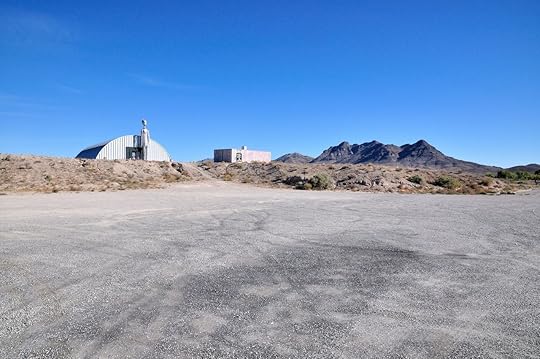
Last week, a Facebook event encouraging people to storm Nevada’s Area 51 in order to discover its alien secrets garnered a lot of attention and over one million RSVPs. Organized by alien enthusiasts, the point of the event was apparently to put pressure on the government to stop hiding alien research from the public and finally get the answers everyone has been craving. Unsurprisingly, the Air Force is having none of it.
The event invited people to “meet up at the Area 51 Alien Center tourist attraction and coordinate our entry. If we naruto run, we can move faster than their bullets. Let’s see them aliens.” To participate in the event, you were asked to show up at the designated meeting spot on Friday, September 20, with the “storming” scheduled to last from 3:00 AM to 6:00 AM.
The Air Force, however, which staffs the area, isn’t taking any chances. A spokeswoman for the Air Force somewhat ominously told The Washington Post that the military is “ready to protect America and its assets. [Area 51] is an open training range for the US Air Force, and we would discourage anyone from trying to come into the area where we train American armed forces.”
The event’s organizer got the message loud and clear. Jackson Barnes, who created the event, wrote on Facebook, “Hello US government, this is a joke, and I do not actually intend to go ahead with this plan. I just thought it would be funny and get me some thumbsy uppies on the internet. I’m not responsible if people decide to actually storm Area 51.”
But then again, he kind of is? Time will tell to see how many people actually try and show up and what consequences they, or the organizer, may face. 
This article was updated on July 16, 2019.
H/T: BBC

More like this: 6 space travel projects that will become a reality in our lifetime
The post Air Force issues strict warning to people planning to storm Area 51 appeared first on Matador Network.

Egypt’s bent pyramid just reopened

Everyone knows about the Great Pyramid of Giza, but the “bent pyramid” is one of Egypt’s most unique ancient structures, and now it’s finally reopening to the public. Built in 2600 BC and located in Dashur, about 20 miles south of Cairo, the pyramid of King Neferu isn’t like most of its brethren. The walls don’t slope upward at perfectly straight angles — but curve. And no, it wasn’t intentional. Architects initially intended to build a smooth-sided pyramid, but the structure became unstable about halfway up, forcing architects to reduce the angle and lay stones in horizontal layers to increase stability.
The pyramid was closed to visitors in 1965 for restoration and further exploration. During this time, internal and external stairs were worked on, a lighting network was added, and some of the stonework in the corridors and burial chamber were repaired. Now, it’s finally being reopened by Egyptian Antiquities Minister Khaled El-Enany.
To celebrate the grand reopening, archeologists are unveiling several sarcophagi, including well-preserved mummies, that were discovered during excavation work in the royal necropolis of Dahshur.
Tourists will now be able to pass through a tunnel, from a raised entrance on the pyramid’s northern side, into two deep chambers. There will also be an additional “side pyramid” open for exploration, which was likely built for Sneferu’s wife. Also open to visitors is the nearby tomb of Sa Eset, who was a supervisor of pyramids in the middle Kingdom, which contains well-preserved hieroglyphic texts.
The Dashur region is the perfect alternative to Giza for travelers interested in seeing pyramids without the crowds. 
H/T: Lonely Planet

More like this: 7 underrated sites in Egypt worth visiting, according to an archaeologist
The post Egypt’s ‘bent pyramid’ is open to the public for the first time since the ‘60s appeared first on Matador Network.

Travel in Charmey, Switzland
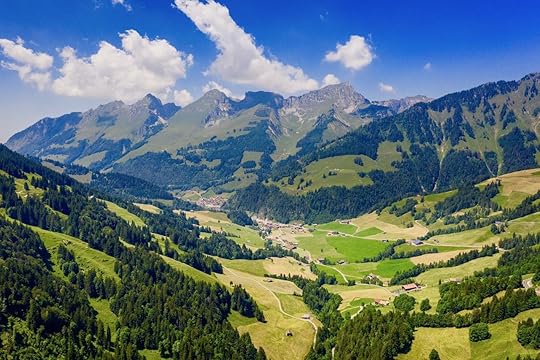
With its highly developed network of trails that make the Alps accessible to trekkers of varying abilities, Switzerland is one of the world’s best-known hiking destinations. Though tackling steep inclines to reach breathtaking views may very well be the reason for a trip to Switzerland, there’s even more to experience between hikes. Getting out into the mountains is best done by staying in a mountain town, and we can’t think of a better one than Charmey in the country’s Gruyere region. Here’s how — and why — to base yourself in Charmey when exploring the Swiss Alps.
Charmey is just a train ride from Geneva.
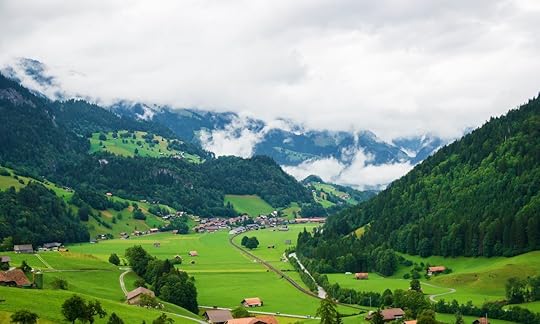
Photo: Roman Babakin/Shutterstock
The two main international airports in Switzerland are located in Zurich and Geneva. Charmey is just a two-hour train ride from Geneva, making it easily accessible to travelers coming in by air. The train also connects with routes coming in from outside of Switzerland, ideal for when you fly into another European country and make Switzerland one stop along your trip.
For the best views of the country’s green, lake-dotted countryside, reserve a window seat for the ride in. There are a number of sights along the trip between Geneva and Charmey worth stopping for, as well. For example, Chillon Castle on Lake Geneva offers a stunning view into Switzerland’s history. The site itself has been occupied since the Bronze Age, between 3000 and 1200 BC. Surviving three major periods in regional history, stretching from the Savoy period in the 12th century to the modern Vaudois period, the castle served as a fortress strategically placed between a major point of movement between northern and southern Europe.
Charlie Chaplin is highly celebrated in Montreux, where he had a home in his later years, making the city an entertaining afternoon respite any time of year — though the city is renowned for its jazz festival each July. The Chaplin’s World museum is a must-do while in town. If you happen to make it in September, the annual Desalpe Festival sees cows marched through town to honor their annual pilgrimage from the hills to the plains. This is a festival to celebrate the changing seasons, but, because it’s Switzerland, there’s plenty of cheese going around.
Charmey is much smaller than Interlaken.
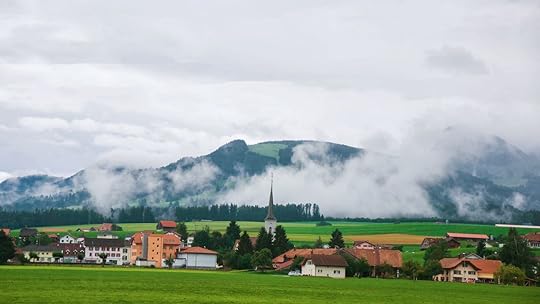
Photo: Roman Babakin/Shutterstock
Though smaller than the major cities of Geneva, Bern, or Zurich, Interlaken is still a large mountain village that sees year-round traffic as a gateway to hiking, via ferrata, paragliding, and cycling. Charmey acts as a smaller hub town that offers access to many of the same adventure activities while lacking the intrusion of international companies. It’s easier to stay and eat at locally owned establishments in Charmey, most of which will be walkable from your lodging. Of those, the hot spots in town for Swiss fondue are L’Etoile and the Brasserie inside the Hotel Cailler.
Beyond the trails, Charmey’s cheese offerings are on point.

Photo: Oscity/Shutterstock
Charmey is the perfect central headquarters for off-mountain attractions in the Gruyere region, as well. Gruyeres Castle is a highlight in the fairytale-like city of Gruyeres, for starters. Of course, the most authentic Gruyere cheese can be found in its namesake canton and city, but for the easiest experience, dine at a local restaurant and skip the raclette for a hearty, gruyere-filled chalet soup, a local specialty.
Next, visit the cheese caves in Charmey to learn how local cheeses are made. Not only does this afford you the freshest cheese of your trip — sorry, Paris — but it’s also the best way to support the local union of independent dairy farmers working to keep their traditions alive for another generation. Don’t leave your hiking boots at the hotel, however, because these farms are traditionally up in the Alps where the cows graze during the summertime, and some of them can still only be reached by foot or horse.
Indulge your sweet tooth at the Cailler Chocolate Factory, one of Switzerland’s oldest chocolate makers. After learning how chocolate is made, visitors see the candy-making process in action and indulge in delicious samples ranging from the company’s standard chocolate to luxurious truffles made with white, milk, and dark chocolates.
Both road and mountain bike routes are available.

Photo: Umomos/Shutterstock
After you’ve sufficiently stuffed yourself, a bike through the Charmey Valley is the perfect way to burn off the sugar rush. The area offers road and mountain biking, both with stunning mountain views and doable in day excursions from your lodging in town.
On a mountain bike, follow the Lakes Route, or the route nine signs, and ride through thick forests that open to sweeping views of the valley and lake below. The full route takes you from Lake Geneva to Lake Lucerne, but from Charmey you can join the trail for a portion of the ride. To find the ideal mountain bike route for your group, use the Trailforks App, which shows trails throughout the region and has detail on length, difficulty, and current conditions.
If you’re on a road bike, you can add a cultural destination to your ride at the home of one of Charmey’s remaining poya artists. Poya is a traditional folk art that takes the shape of painted wood depicting the return of the cows from their summer grazing in the Alps to their winter homes in the valley. Dressed in traditional costume, the artist proudly displays her work, which you may also find throughout the valley, hung in its traditional place: above barn doors.
If rentals and gear are needed, stop into Castelle Sports on Route du Verdel 2, which can also offer advice on current conditions and make recommendations based on experience level. The shop offers guided tours of the area’s trails and roads, and they’re not shy about pointing you towards a post-ride pint, either.
There are 13 mountains to summit in the surrounding valley.

Photo: Roman Babakin/Shutterstock
With access to the Alps across much of Switzerland, Charmey is the ideal place to reach trailheads of varying difficulties for both day hikes and backpacking excursions. While more people are choosing to conquer the mountains on the two wheels of a bicycle, hiking remains the classic choice for taking in the natural beauty of the region. With 13 peaks in and around the Charmey Valley, active travelers and hiking enthusiasts will find Charmey to be the perfect base for bagging peaks, as well as an ideal city for recovery. Apart from the quiet atmosphere or a peaceful day of paragliding to relax after long days of physical exertion, the city’s reigning resort, Hotel Cailler, is home to the best method of recovery available: a spa.
Right near town, the Lake Montsalvens trail is about six miles through what’s called the Prealps. Most of the trail is flat, though it does ascend about 800 feet if you undertake the entire journey. The Breca Valley and Les Recardetes hike starts in nearby Schwarzsee and is the ideal day hike for the semi-serious trekker. Over about four hours, you’ll cover 6.2 miles and ascend 2,800 feet up the jagged peaks of the Les Recardetes mountains, with views looking back over the valley if you manage to pull your eyes off the mountain.
When choosing lodging, expect the famous Swiss chalet experience.
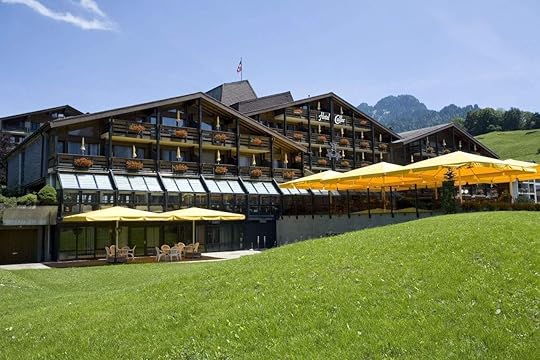
Photo: Hotel Cailler
Of course, you’ll need somewhere to crash while in town. Charmey has a range of options depending on your price point. For budget lodging, try Gruyere Rooms B&B, just south of town, where rooms run about $120 per night but are quite comfortable. If convenience to town and trail is priority number one, Hotel Cailler is your go-to. Rooms here start at $223. The chalet-style resort sits on a hill overlooking the city and valley, which its spa also looks onto through floor-to-ceiling windows.
The spa is connected by an underground tunnel to the hotel. Hotel guests and day-pass holders can enjoy its many pools with jets, relaxing bubbles, and waterfalls of varying pressures. Though the hotel is not affiliated with the Cailler Chocolate Factory, it is known for its double cream meringue confections, which are a very traditional local dessert served with fresh berries and more double cream. 

More like this: 5 things US cities can learn from Bern, Switzerland
The post Charmey is the ultimate mountain town for exploring the Swiss Alps appeared first on Matador Network.

Best street food in Beijing

Food is an important part of Chinese culture. It’s obvious just how important it is in the capital city of Beijing, where you can find an eclectic food scene that ranges from essential Beijing dishes that tell the history of the city to sweet and savory Chinese desserts. One of the best ways to start your culinary trek is by checking out the city’s street food, sold along main streets, hutong alleyways, parks, and just about anywhere else you can think of. These are eight of Beijing’s most delicious street foods and where to try them.
1. Bao

Photo: Carlos Huang/Shutterstock
Bao are steamed buns perfect for eating on the go. This quintessential Chinese food is soft and fluffy, and there’s no end to the kinds of fillings bao might have. They can be full of pork or other meat, or filled with red bean paste for a vegetarian version, and the taste can be savory or sweet.
While many Asian cultures have their own takes on steamed buns, the bread originated in Northern China, where wheat was a major grain since at least 1,000 BCE. There are a number of legends that each give their own depiction of exactly how steamed buns came to be, but the most commonly told one dates back to the third century. The story goes that a general named Zhuge Liang needed to cross a river with his army. People on the other side of the river demanded the heads of 50 people as payment for crossing. Some legends say that Liang used balls of dough filled with meat as a substitute without issue and others say that he used them as a form of deception.
Regardless of what amount of truth the legend holds, modern bao are far from head-sized and are the perfect snack for on-the-go eating.
2. Lǎo Běijīng suānnǎi

Photo: Alex-VN/Shutterstock
Yogurt is a common breakfast item around the world, and China is no exception. In Beijing, there’s lǎo Běijīng suānnǎi, which directly translates as “old Beijing yogurt.” The yogurt-in-a-jar is freshly made by heating up milk and adding sugar, which gives it a sweet taste, and is kept at room temperature. Kept inside white ceramic jars topped with white paper and blue writing, the yogurt is usually found lining the outside of store entrances. Simply stick a straw through the paper to enjoy.
Traditionally, the jars have to be returned to the vendor to recycle when you’re done, so you have to eat the yogurt on the spot. For an extra yuan or two, however, you can take the ceramic jar to-go, though some places have now started using disposable serving materials to eliminate the need for returns.
3. Jiānbing
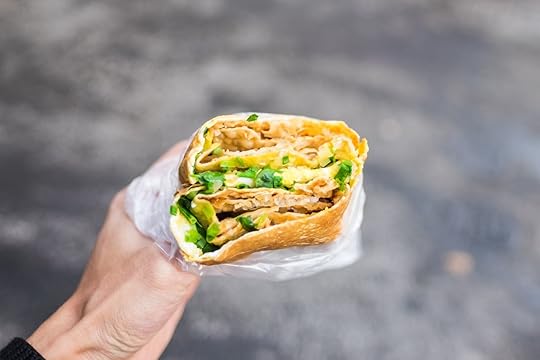
Photo: Larry Zhou/Shutterstock
A perfect complement to lǎo Běijīng suānnǎi (as well as a filling food on its own), jiānbing is a savory fried pancake. Typically eaten for breakfast, you can find vendors cooking up jianbing from sunrise to late morning just about anywhere in the city; the telltale sign will be the large grill sizzling with an equally large pancake. The batter is made of wheat flour, and eggs and other fillings are usually added on top while it’s being cooked. The pancake is then turned over and over, making it similar to a sandwich. Common fillings include scallions, cilantro, sesame seeds, ham, and baocui, a type of fried cracker. Jiānbing is popular, so expect to wait in line for a few minutes at the very least.
4. Tánghúlu
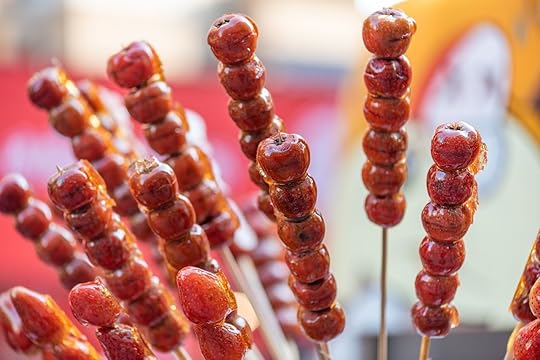
Photo: LP2 Studio/Shutterstock
Beijing’s answer to candy apples is tánghúlu, which is candied Chinese hawthorn. The red fruit itself has the appearance of an apple but has both a sweet and sour taste. You’ll find this treat on a stick with a stack of hawthorns coated in a thick layer of sugar (and sometimes caramel, depending on the vendor), which only adds to its sweetness. Because of the popularity of candied hawthorns, vendors also sell other versions with fruits like strawberries or kiwis.
5. Yóutiáo

Photo: Suwat Sirivutcharungchit/Shutterstock
Somewhere between churros and doughnuts, yóutiáos are fried sticks of dough. They’re usually eaten for breakfast, though you can find them throughout the day, and Beijing locals often have a cup of soy milk as an accompaniment. Like most deep-fried doughy foods, yóutiáo is crunchy on the outside and soft on the inside, and since most vendors use salt while making it, it tastes sweet and salty.
6. Ròujiāmó
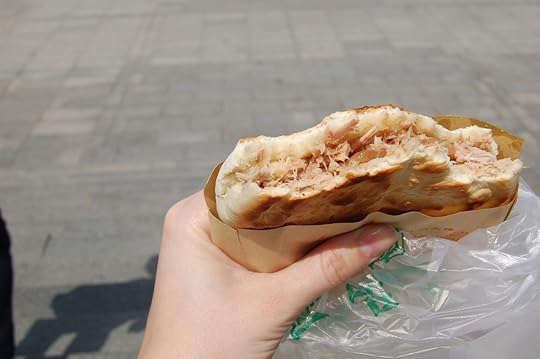
Photo: JessicaGirvan1/Shutterstock
From the Shaanxi province, ròujiāmó are kind of like Chinese burgers. The word rou< means “meat,” jia means “put in,” and mo can be translated as “bread.” The usual filling is meat, with pork being the most popular. Traditionally, the pork is stewed for a while and seasoned with about 20 spices. The buns are made from fermented dough and cooked in an oven, giving it a soft, chewy taste.
7. Miànchá
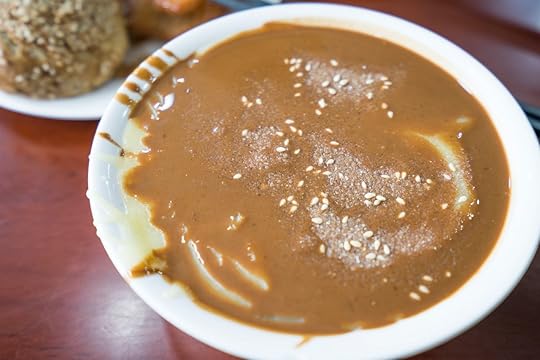
Photo: HelloRF Zcool/Shutterstock
Miànchá is type of porridge that’s loved by locals in Beijing. It’s made with millet flour, which gives it a yellow tint, and the sesame paste seasoning is what makes the top brown. Also mixed in are sesame seeds, salt, and Sichuan peppercorns. Miànchá is a street food that’s a little harder to find than most but is usually sold in hutong alleyways.
8. Chuàn

Photo: bonchan/Shutterstock
Chuàn are pieces of food on skewers, similar to shish kebabs. While lamb is the traditional meat used, beef, pork, or even non-meats are skewered by modern sellers. This street food originated in China’s Xinjiang region and is sometimes pronounced and spelled as chuan’r due to the northern pronunciation. When ordering chuàn, you can pick which spices are used to season it, but salt, pepper, cumin, sesame, and chili flakes are generally used.
Beijing food streets
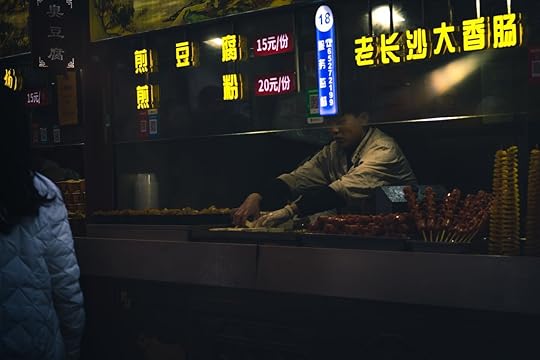
Photo: Alessandro Pozzi/Shutterstock
Instead of having food markets, Beijing’s taken the concept and expanded it into full on streets called food or snack streets. A particular street will be lined with stall upon stall, vendor upon vendor, serving up some of the most delicious (and, sometimes, most interesting) street food in the city. A few of the most popular ones are:
Wangfujing Snack Street — Located along Wangfujing Street, a busy shopping street. This particular snack street is popular among tourists, and as such, prices here are higher than others. It sells typical street food, as well as more adventurous dishes, like fried insects.
Guijie Snack Street — Also known as Ghost Street, Guijie is open 24/7. It’s always lively and full of people, and the street food here is cheaper than most.
Niujie Muslim Snack Street — Nicknamed “Ox Street,” this is a snack street where you’ll also find halal food. Along it is the Niujie Mosque, which is the oldest mosque in Beijing. 

More like this: The best places to eat in Beijing right now
The post The 8 most delicious street foods in Beijing and where to try them appeared first on Matador Network.

Matador Network's Blog
- Matador Network's profile
- 6 followers



